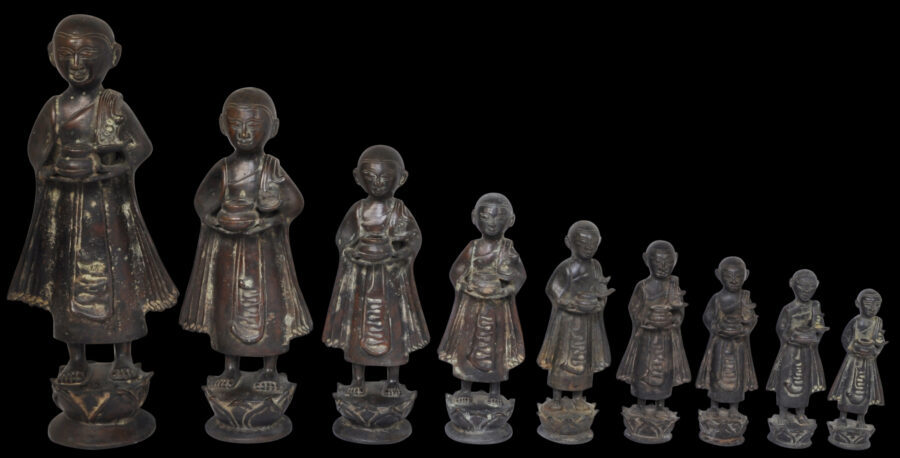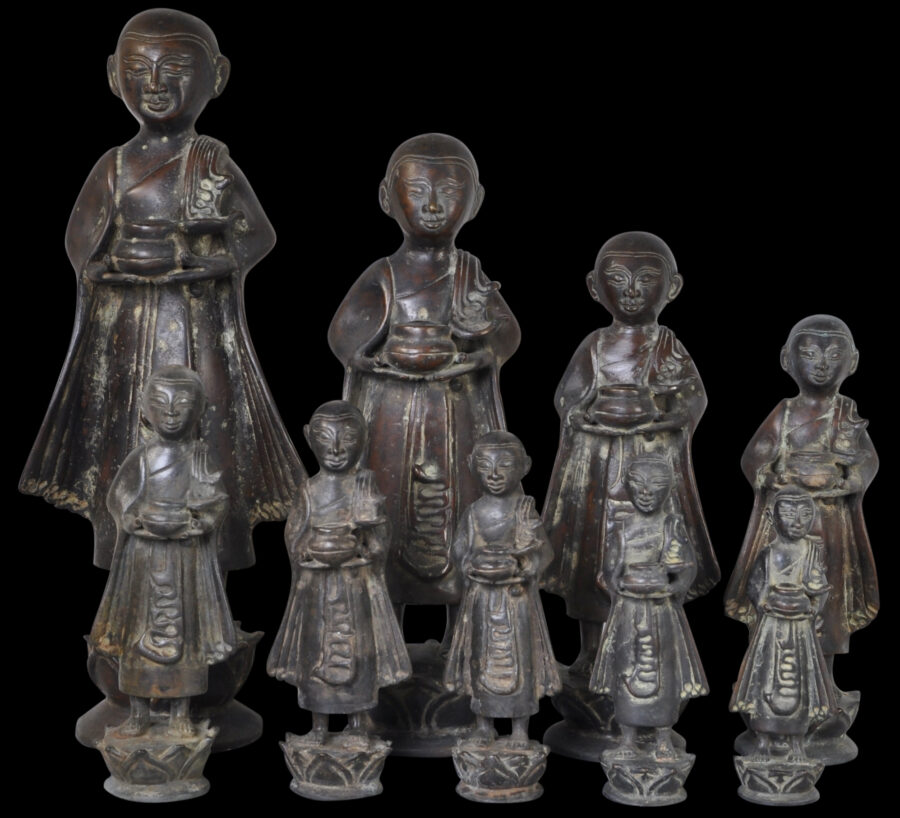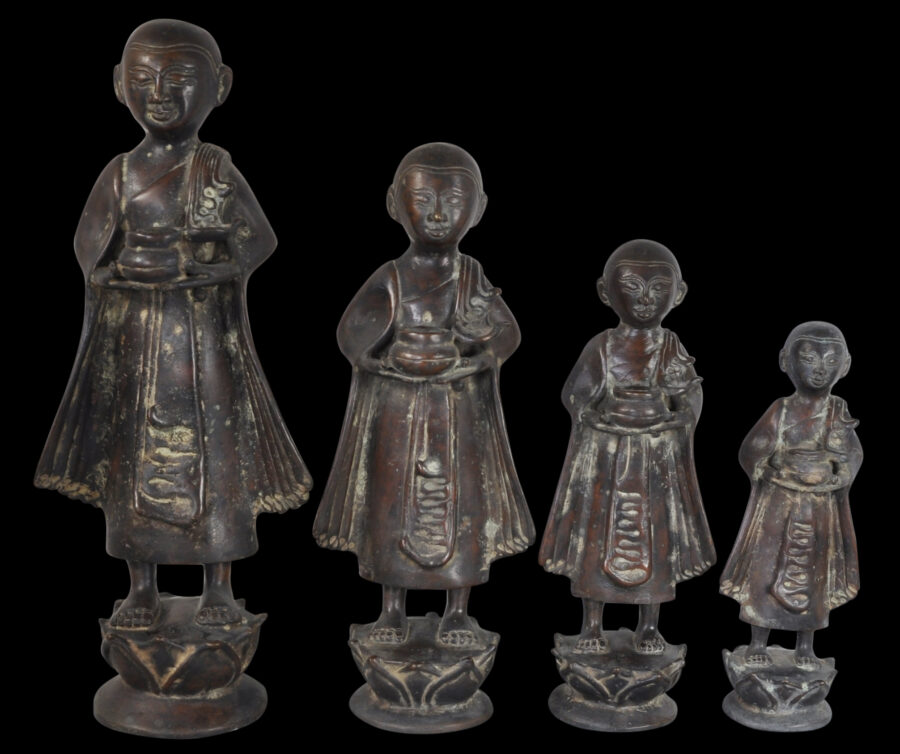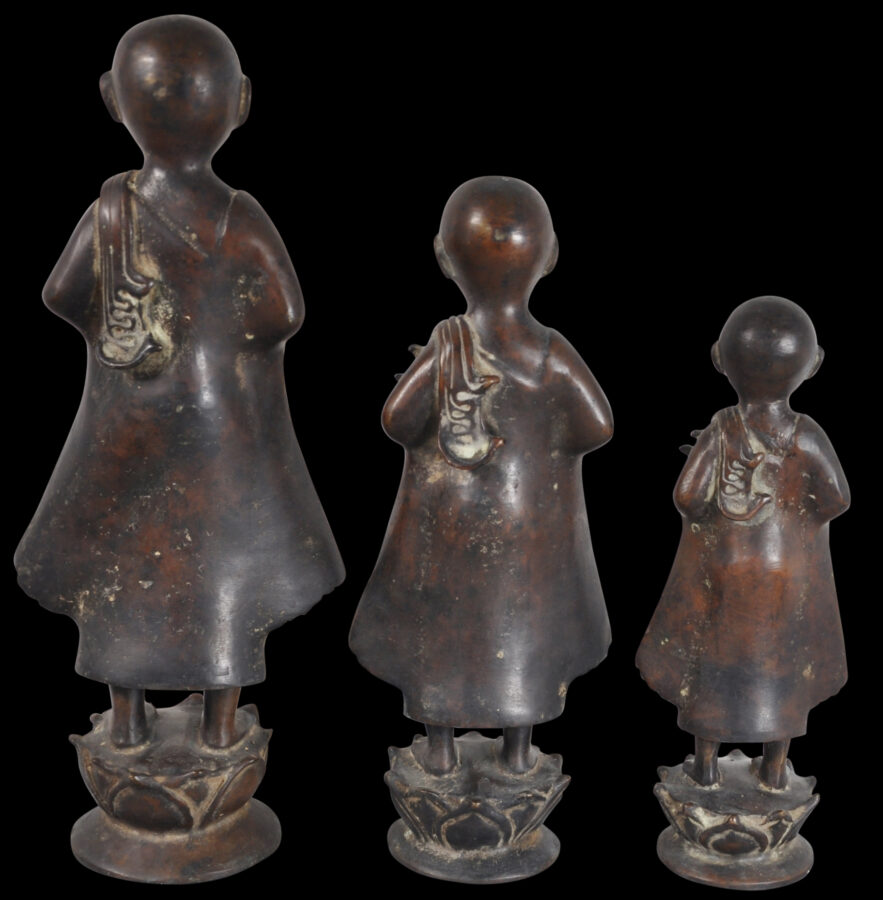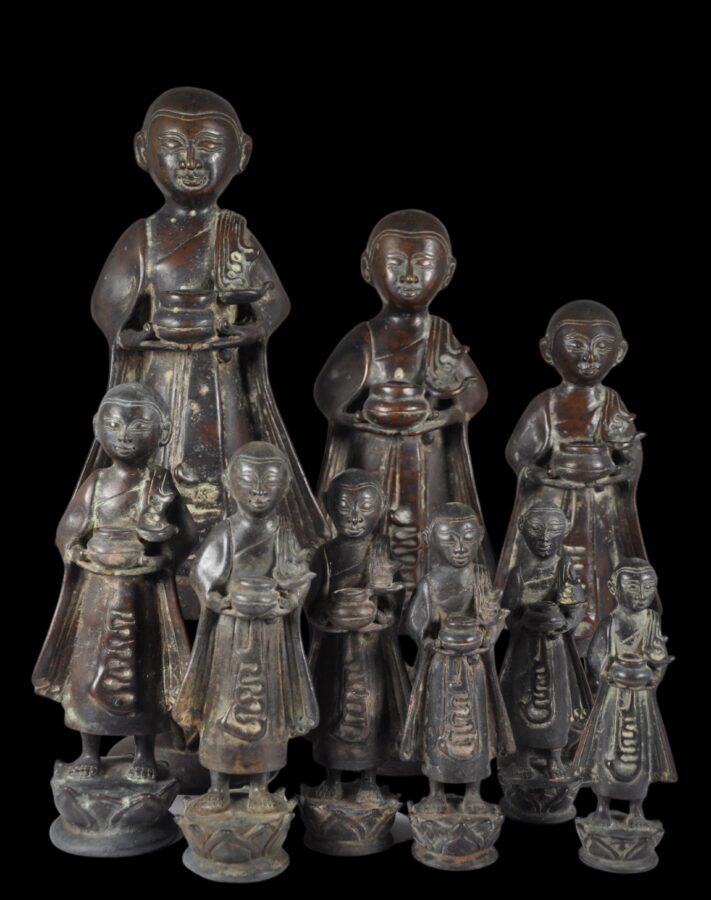Enquiry about object: 9354
Nine Matched, Descending Bronze Burmese Buddhist Disciple Monk Images
North-eastern Burma (Myanmar) 18th century
height: 12.1cm, 13.4cm, 14cm, 15.1cm, 16.5cm, 18.2cm, 21.6cm, 25.6cm and 30.2cm
Provenance
UK art market
This splendid set of nine of the Buddha’s disciples dates to the 18th century and was cast in bronze in Burma’s northeast. As such, the rendering of the faces and overall composition shows Chinese as well as Burmese influence. Each image shows a disciple standing on a lotus pedestal, holding a covered begging or alms bowl (thabeik) in his hands, with long robes flaring out, and elegant robe folds cast over the left shoulder and down the front of the robe. Each has a beautiful face with double eyebrows that curve up at the ends, and a double hairline (though otherwise with a shaved head). The fingernails and toenails of each are finely rendered.
The set of nine is likely to be complete. Each disciple is a perfect graduation in size up (or down) from the next. Nine also is a deeply auspicious number in Burma – there are the nine planets, the nine attributes of the Buddha, the nine auspicious gems (Nawarat), and so on.
Begging for alms is an everyday part of monastic life of a Burmese Buddhist monk. Early each morning, they make their rounds and members of the public give them food that they have prepared as a merit-earning exercise. In this way, the donors are not giving a service to the monks, so much as the other way round – the monks are providing an opportunity for the religiously observant to earn merit for the afterlife. Similarly, the commissioning of this set of disciples itself would have been an act of merit on the part of the individual or family that paid to have them made.
A similar set is illustrated in Falconer (1998, p. 122). Less fine or more naive examples of partial sets are illustrated in Karow (1991, p, 104-105) and Somkiart Lopetcharat (2007, p. 142).
The set here is in excellent condition. There are no losses or repairs. There is encrustation (soil?) to the crevices. Each has a dark brown patina.
References
Falconer, J. et al, Myanmar Style: Art, Architecture and Design of Burma, Thames & Hudson, 1998.
Karow, O., Burmese Buddhist Sculpture: The Johan Moger Collection, White Lotus, 1991.
Murphy, S. (ed.), Cities and Kings: Ancient Treasures from Myanmar, Asian Civilisations Museum, 2016.
Somkiart Lopetcharat, Myanmar Buddha: The Image and its History, Siam International Books Company, 2007.


